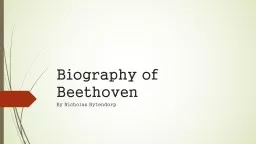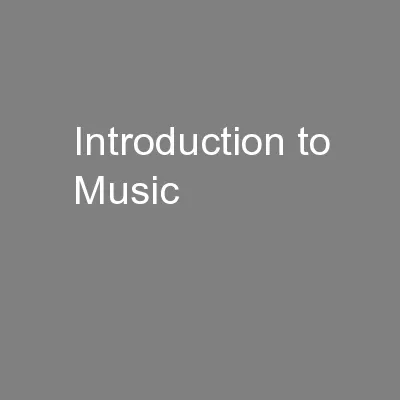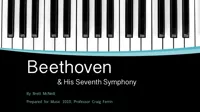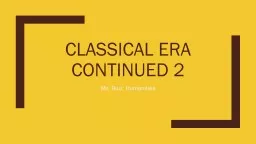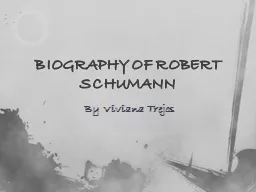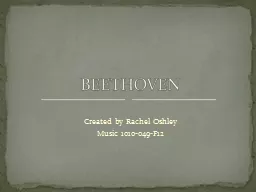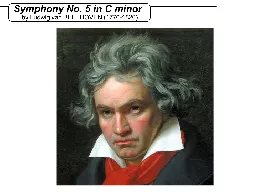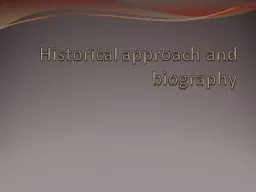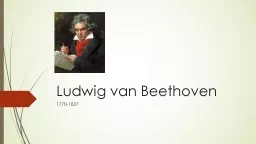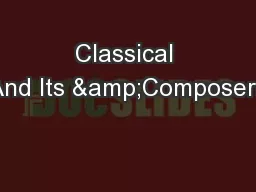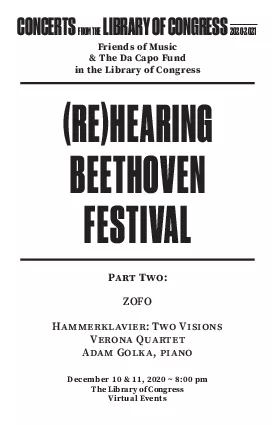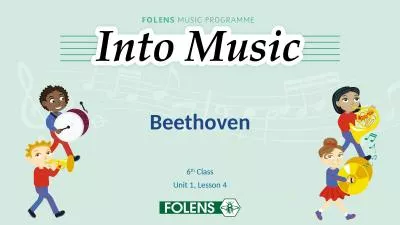PPT-Biography of Beethoven
Author : liane-varnes | Published Date : 2017-06-14
By Nicholas Bytendorp Early Years Born in Bonn Germany on December 17 1770 Considered the Romantic and Classical Era He claimed to be born in 1772 even after receiving
Presentation Embed Code
Download Presentation
Download Presentation The PPT/PDF document "Biography of Beethoven" is the property of its rightful owner. Permission is granted to download and print the materials on this website for personal, non-commercial use only, and to display it on your personal computer provided you do not modify the materials and that you retain all copyright notices contained in the materials. By downloading content from our website, you accept the terms of this agreement.
Biography of Beethoven: Transcript
Download Rules Of Document
"Biography of Beethoven"The content belongs to its owner. You may download and print it for personal use, without modification, and keep all copyright notices. By downloading, you agree to these terms.
Related Documents

